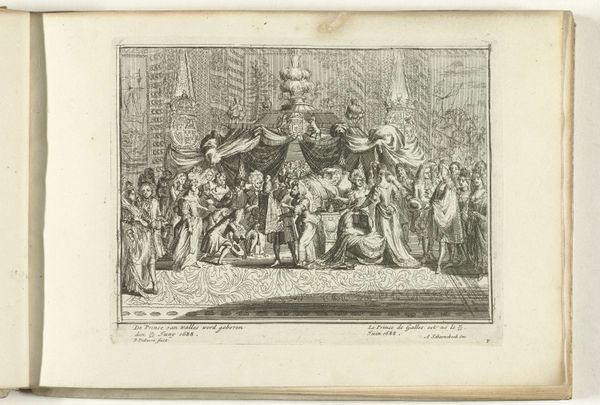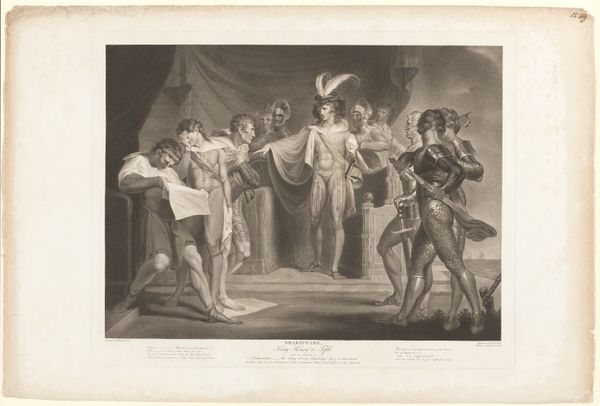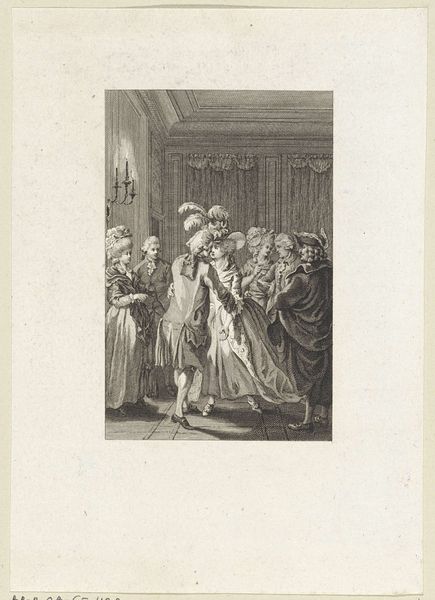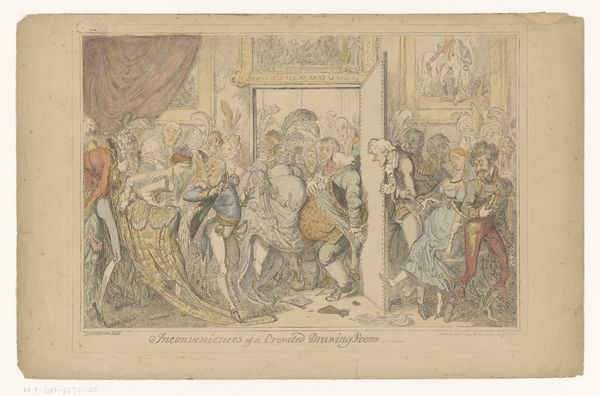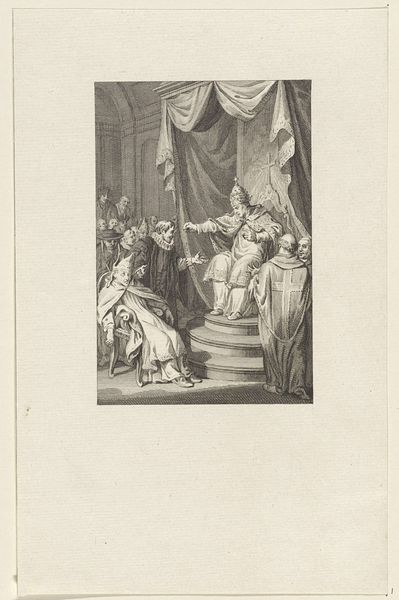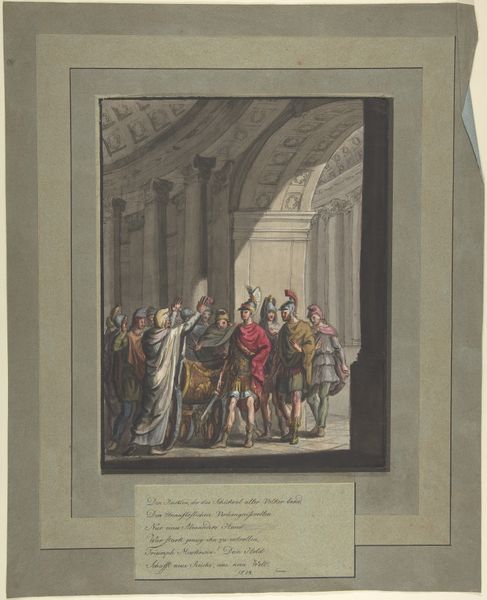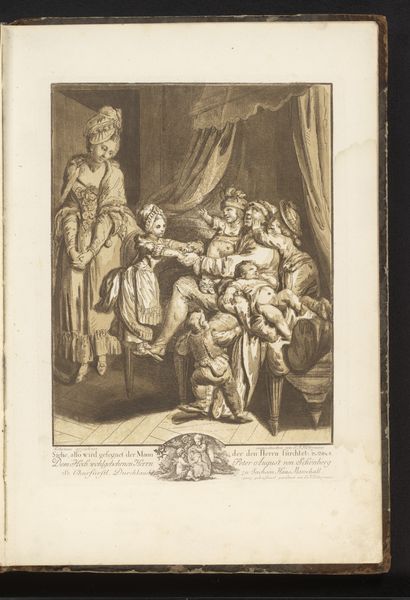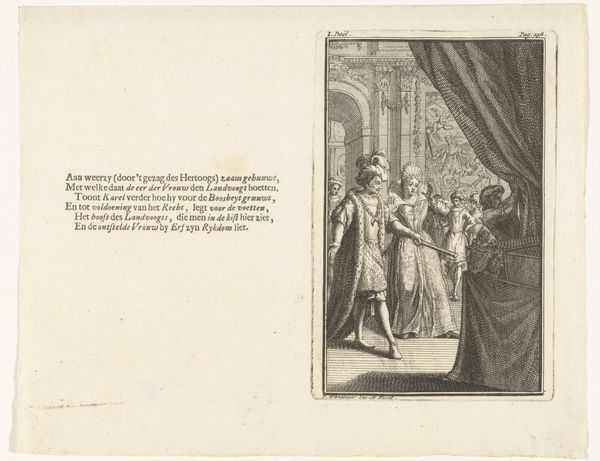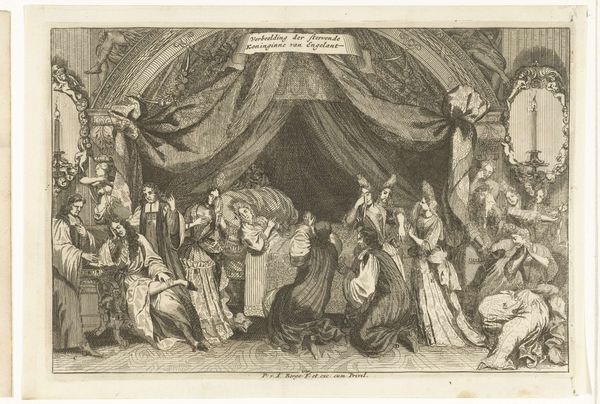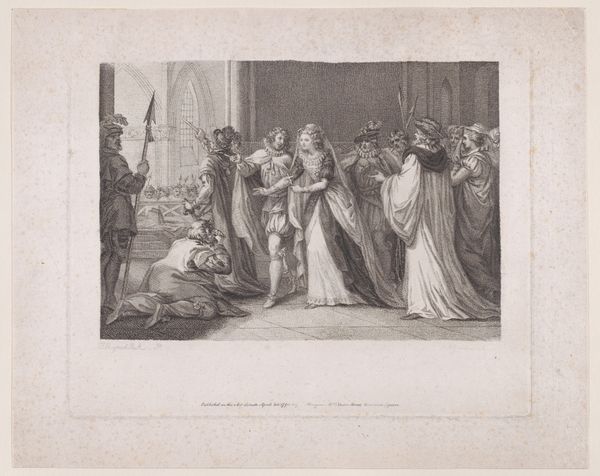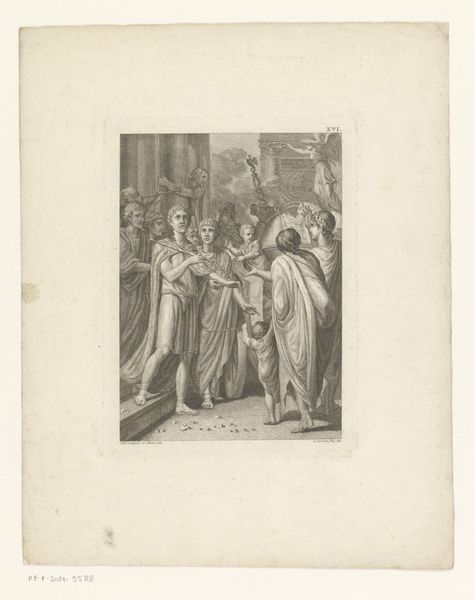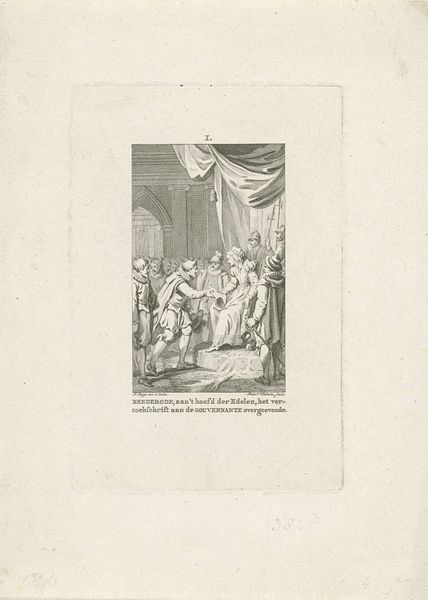
print, engraving
#
narrative-art
# print
#
figuration
#
romanticism
#
genre-painting
#
history-painting
#
engraving
Dimensions: height 339 mm, width 425 mm
Copyright: Rijks Museum: Open Domain
Curator: "De Reis / Le voyage," created between 1833 and 1856 by Glenisson & Van Genechten, is a print showcasing a scene steeped in the fashion of its time. It's a very formal gathering of folks. What’s your initial take on it? Editor: Stiff! But elegant. I get the sense of poised social theater – like everyone’s playing a role in a meticulously choreographed dance. The way the artist delineates space, and how the figures command their sartorial outfits strikes me as both precise and deeply theatrical. Almost melancholic, in a way. Curator: I find the rigid formality interesting in its social context. Remember that this era was fixated on social decorum and public performance, all reflected in visual culture. This print reveals those social dynamics in detail, portraying specific aspects of societal ritual, what we may perceive as performative authenticity, especially for certain social classes. Editor: The details in the engraving style enhance the artificial feeling! The elaborate costumes—are we to think they actually felt comfortable encased in all that gear? Visually appealing, yes, but a commentary perhaps? They seem trapped in their own luxurious cages, but are they conscious of this at all? Curator: Considering the era, this could be viewed through the lens of colonialism and its romanticization, aligning with trends in 19th-century depictions of genre and historical narratives that were used to cement and rationalize colonial social orders. I imagine "Paul and Virginia" was meant to invoke sentimentality in its contemporary audiences. Editor: Sentimental perhaps, but it also reveals this strange tension between appearing a certain way in a world where you’re only as valuable as the mask you wear in society. There's this underlying emotional detachment even amidst all the gilded adornment. Like the finest pastries served at a funeral tea! Curator: So it serves not only as historical record, but also as a visual artifact reflecting the intricacies of identity performance. "De Reis/ Le Voyage" therefore isn't just about what we see on the surface; it’s a complex mirror reflecting social expectation and individual constraints. Editor: Leaving one wondering, did these characters feel truly fulfilled or simply beautifully trapped? Makes you want to dig deeper beyond the surface of societal portrayals of beauty and societal norms of expression, and try to empathize.
Comments
No comments
Be the first to comment and join the conversation on the ultimate creative platform.
